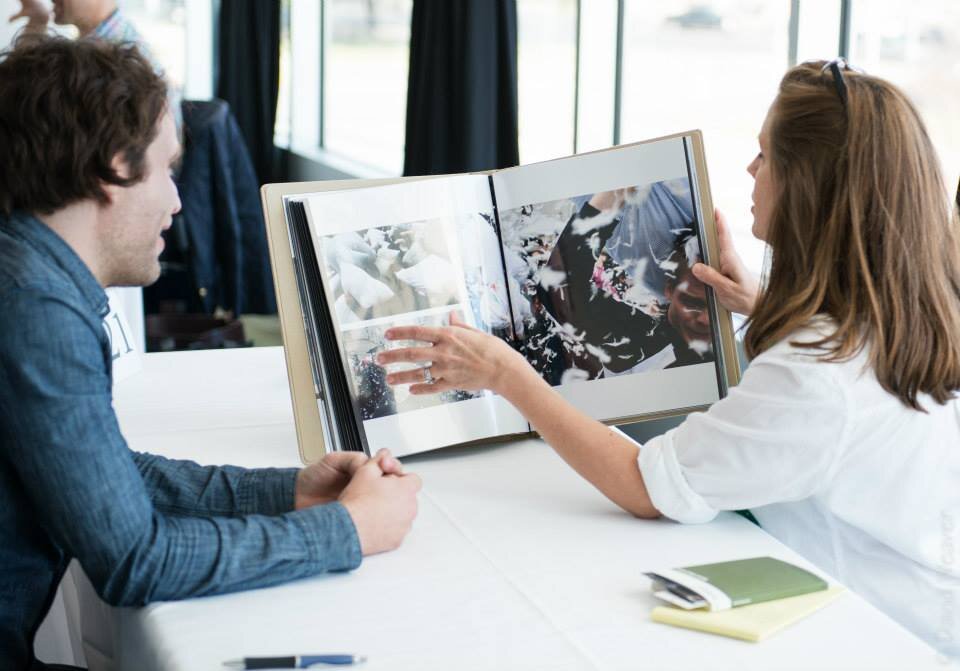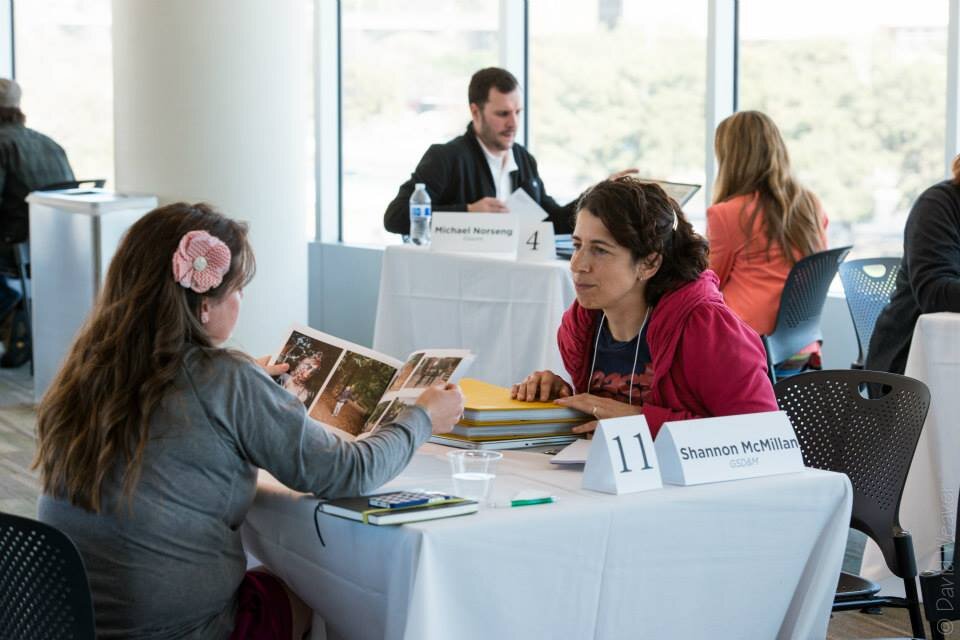As someone who's been attending and producing portfolio reviews for 15+ years, I've seen what works and what doesn't. While portfolio reviews can offer valuable feedback, they're just one piece of the puzzle in building a successful photography career.
First, let's talk about maximizing a review if you decide to attend one:
DO
Be honest with yourself about if you are really ready to show the work. Maybe you need another year of shooting before you start showing your book to art buyers, art directors and photo editors. You only get one chance at a first impression, don't rush it if it's not the right time. Ask people who you trust for their honest opinion.
Research your reviewers and make sure that your work is relevant to what they do. You have 15-20 minutes, often with some pretty influential and powerful creatives in the industry, don't waste it. Would you roll up to a job interview without knowing anything about the company?
Have a purpose for each review and communicate that purpose to the reviewer when you sit down. Example: "I've been following your magazine for years and feel my work would fit in. Do you think I'm ready to shoot for you, and if not, what needs improvement?" Or, "I would love get feedback on the book and recommendations for colleagues in the industry who may respond to my style of work." Or, "This is a new personal project that I'm working on, would love to know if you think it's ready to show to galleries."
Come armed with 1 or 2 specific questions that are pertinent to your reviewer's area of expertise.
Do bring the actual portfolio that you intend to show to clients. Hopefully the reviewers you meet with are also potential clients. They're not going to give you a pass because you intend, later on, to make a better book. So don't bring a hastily thrown together book and then say that you are going to change it later. The whole point of the portfolio review is to get feedback and how can someone give you good feedback if what they are looking at isn't what you really want to show?
Make sure your prints look great. This is especially important when seeing galleries.
Leave behind a well-printed leave behind. Invest in a graphic designer to help you create something that looks professional. Just because you know Photoshop doesn't mean you are a designer. If you are seeing a dream client, kick it up a notch and leave something more unique than a postcard. However, keep in mind that not everyone will want a promo. See below.
Keep notes. By the end of a long day, all the reviews can start to blend together. Make a separate page for each reviewer and mark down which images they pointed out liking, where they paused a bit longer, what questions they had about your work and specific feedback they gave you. You may also want to record audio of each meeting, if the reviewer is cool with that.
DON'T
Don't default to an iPad presentation. An iPad is not necessarily the best way to show still photography. The glare in some rooms makes it very hard to see the photos, especially if your images tend to be dark. I often find myself looking at my own reflection instead of the photos.
Also, unless the iPad presentation is really slick, it can feel like not enough care was put into the portfolio. I mean, let's admit it, how hard is it to create a folder of images for someone to flip through? When I see a beautifully printed portfolio, it lends the photographer some legitimacy, makes them at least appear to have invested a lot of time and effort into their work, all which helps me take them more seriously.
Everyone spends so much time on their phones now, consuming an almost endless stream of imagery. It doesn’t feel as unique to be swipe through an iPad. Print feels special.
All that said, pay attention to your budget and don’t spend the extra money on printing if you can’t afford it.
Don't force your leave behind on the reviewer. Some people flew in for the event and may not want to tote a bunch of promos and books back. Or they may feel it's environmentally wasteful and rather not have the extra 'stuff' in their lives. Or they just may not have liked your work enough to want to take a promo. Ask if they'd like a card, but don't push it. Also don't just offer a huge and bulky leave behind. If you want to make something big, it's also nice to offer something small like a postcard.
Don't make excuses. Popular examples include: "I didn't bring my strongest work." "I didn't have time to put together much, but this should give you an idea." or "I just found out about this event."
Don't argue with constructive criticism The people looking at your work know what they are talking about. They may all have different opinions, but that is valid considering that people come from different backgrounds and that visual art is very subjective. You may not agree with someone, and that is ok, but don't tell them that they are wrong.
Want to get ready for a portfolio review?
Contact me to learn how we can fine tune your portfolio, create a great promo and get the most out of the time and money you're investing.



Photographers and creatives gather at the Texas Photo Roundup Portfolio Reviews in Austin, TX.
Photos by David Weaver.
New Orleans Photo Alliance's PhotoNOLA portfolio review session at the International House Hotel conference facility.
Photos by George Long



